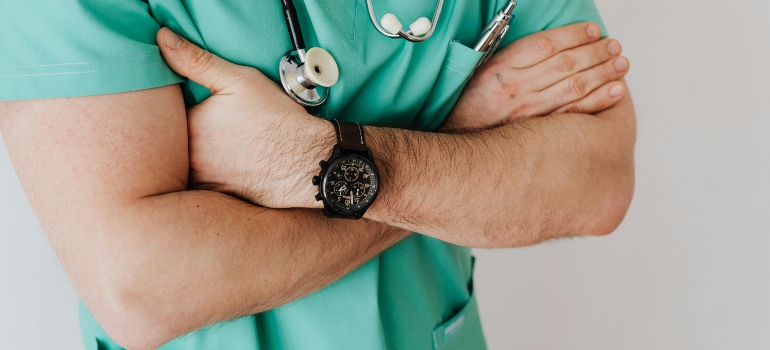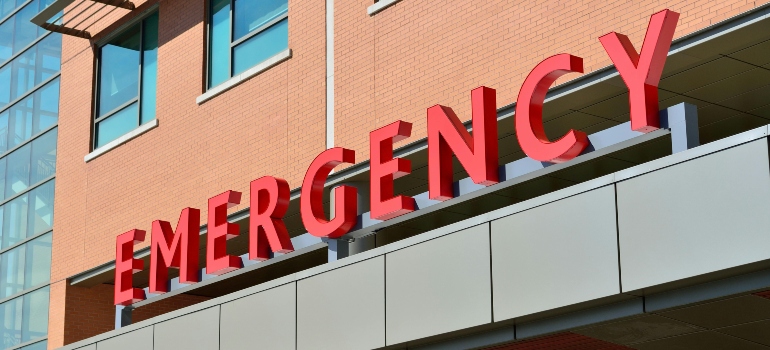Signs of Opioid Overdose
Opioid overdose can happen to anyone using opioids, whether they are prescribed or not. Recognizing the signs of opioid overdose can save lives. In this blog, we will explain the symptoms to watch for, helping you act quickly if someone needs help. Understanding these signs is critical for providing timely and effective assistance. We will also cover how to prevent opioid overdose, and the importance of seeking help if you’re battling addiction.
Jump to Section
What are Opioids?
Opioids are a class of drugs used for managing pain relief. They work by interacting with opioid receptors in the brain and other parts of the body to reduce the perception of pain. Some opioids are made from the opium poppy plant, while others are synthetic or semi-synthetic, created in laboratories.

There are both legal and illegal opioids. Prescription opioids include medications like oxycodone, hydrocodone, morphine, codeine, fentanyl, and tramadol. Doctors prescribe these drugs for pain management after surgeries, injuries, or for chronic conditions. When taken as directed by a healthcare provider, these medications can be effective and safe. However, misuse of prescription opioids can lead to serious health risks, including addiction and overdose.
Illegal opioids, such as heroin, are not prescribed by doctors and are often used for their euphoric effects. The misuse of both legal and illegal opioids has led to a significant increase in opioid-related overdoses and deaths. One of the major issues with opioids is their potential for addiction. Regular use, even as prescribed by a doctor, can lead to tolerance (needing more of the drug to achieve the same effect), dependence, and in some cases, opioid use disorder.
Opioids can cause a range of effects. While they are effective at pain relief, they can also cause side effects such as drowsiness, constipation, nausea, and slowed breathing. In higher doses, opioids can severely depress breathing, leading to hypoxia (a lack of oxygen to the body’s tissues) and potentially fatal overdose.
The Widespread Impact of Opioid Overdose
The opioid epidemic began in the late 1990s when pharmaceutical companies reassured the medical community that patients would not become addicted to opioid pain relievers. This led to widespread prescription of opioids, eventually resulting in increased misuse and addiction. The epidemic has had devastating effects, contributing to a substantial rise in overdose deaths. In 2022, there were approximately 100,306 drug overdose deaths in the U.S., with nearly 75% involving opioids. Synthetic opioids, such as fentanyl, are particularly deadly. In 2021, they were involved in nearly 88% of opioid overdose deaths. Overall. about 10.1 million people misused prescription opioids in the past year, according to recent data. Heroin and synthetic opioids like fentanyl are the most common substances involved.
What Happens When Someone Overdoses on Opioids?
Opioids interact with opioid receptors in the brain and nervous system, which control pain, emotions, and breathing. These receptors are found throughout the brain, including in areas that regulate automatic functions like breathing and heart rate. Here’s what happens during an overdose:
- Respiratory Depression: Opioids depress the brainstem’s ability to regulate breathing. This leads to slower and more shallow breathing. In severe cases, breathing can stop completely, leading to hypoxia (lack of oxygen), brain damage, or death.
- Central Nervous System Depression: Opioids slow down the central nervous system, which can cause drowsiness, unconsciousness, and a loss of coordination and alertness. This deep sedation makes it difficult for the person to respond to external stimuli.
- Pinpoint Pupils: The drug causes the pupils to constrict to a very small size, known as miosis or pinpoint pupils. This is one of the most recognizable signs of an opioid overdose.
- Pulmonary Edema: In some cases, fluid can accumulate in the lungs (pulmonary edema), further complicating breathing and oxygenation.
- Hypoxia: Due to respiratory depression, the brain and other vital organs do not receive enough oxygen, leading to hypoxia. This condition can cause permanent brain damage, cardiac arrest, or death if not promptly treated.

Why Opioid Overdose Occurs?
Several factors can contribute to an opioid overdose:
- High Doses: Taking a dose higher than what is prescribed or safe, especially in non-tolerant individuals, can overwhelm the body’s ability to manage the drug’s effects.
- Potency of the Drug: Synthetic opioids like fentanyl are much more potent than natural opioids. Even a small amount can cause a fatal overdose. These drugs are often mixed with other substances without the user’s knowledge, increasing the risk of overdose.
- Combination with Other Substances: Combining opioids with other depressants, such as alcohol, benzodiazepines, or other sedatives, can exacerbate respiratory depression and increase the likelihood of overdose.
- Reduced Tolerance: Individuals who have reduced or stopped opioid use and then resume at the same dosage they previously used are at a higher risk of overdose. Their bodies no longer have the same tolerance to the drug’s effects.
- Injection Use: Injecting opioids leads to faster absorption and higher peak levels in the blood, increasing the risk of overdose compared to other methods of administration.
How to Spot an Opioid Overdose?
Recognizing the signs of opioid overdose quickly can save a life. Here is what to watch out for:
- Small, Constricted Pupils: One of the most common signs of an opioid overdose is pinpoint pupils, which appear very small and constricted.
- Loss of Consciousness: The person may be unresponsive, unable to wake up, or might seem to be in a very deep sleep. If they don’t respond to loud noises or physical stimulation, this is a critical warning sign.
- Slow or Shallow Breathing: Breathing may slow down significantly or become very shallow. In severe cases, it might stop altogether. Listen for choking or gurgling sounds, which can indicate that the person’s airway is obstructed.
- Pale or Clammy Skin: The skin might become very pale, clammy, or feel cold to the touch. For those with lighter skin, a bluish-purple tint around the lips or fingernails may appear. For those with darker skin, a grayish or ashen appearance is common.
- Limp Body: The person’s body may become very limp and lifeless. They may not be able to move or respond to stimuli.
- Slow or Erratic Pulse: The pulse may be slow, erratic, or completely absent. This indicates that the heart is not pumping blood effectively.
- Vomiting: The person might vomit, which is dangerous because it can lead to choking, especially if they are unconscious.

What to Do During an Opioid Overdose?
When you suspect someone is experiencing signs of opioid overdose, immediate action can save their life. Here are the critical steps to follow:
- Call 911 Immediately: The first and most crucial step is to call emergency services. Provide them with as much information as possible about the person’s condition and any drugs they may have used.
- Administer Naloxone (if available): Naloxone, also known as Narcan, is a medication that can reverse the effects of an opioid overdose. It is available as a nasal spray or injection. Administer the naloxone as instructed.
- Support Their Breathing: If the person is not breathing or their breathing is very slow, provide rescue breaths: Tilt their head back and lift their chin to open the airway. Pinch their nose shut and give a breath into their mouth every 5 seconds until they start breathing on their own or until help arrives. If you are trained in CPR, you can also perform chest compressions.
- Place Them in the Recovery Position: If the person starts breathing again or if you need to leave them momentarily, place them on their side to prevent choking. This position helps keep their airway clear: Lay them on their side. Bend their top leg and move it forward. Tilt their head back slightly to keep the airway open.
- Stay with Them: Continue to monitor their condition until emergency services arrive. Naloxone can wear off, and the person might experience another overdose if opioids are still in their system. Do not leave them alone; keep them calm and comfortable.
How to Administer Naloxone?
Naloxone is a medication designed to rapidly reverse opioid overdose. It works by binding to opioid receptors in the brain, displacing the opioids and blocking their effects. This action restores normal respiration in a person whose breathing has slowed or stopped due to an overdose. Naloxone is available in two forms: a nasal spray and an injectable solution.
To administer naloxone nasal spray, first ensure the person is lying on their back. Tilt their head back to open the airway. Hold the naloxone nasal spray with your thumb on the bottom of the plunger and your first and middle fingers on either side of the nozzle. Insert the tip of the nozzle into one nostril until your fingers touch the bottom of the person’s nose. Press the plunger firmly to release the dose into the nostril. If the person does not respond within two to three minutes, administer a second dose in the other nostril.
For the injectable form of naloxone, begin by drawing up the medication into a syringe. This can be done by removing the cap from the naloxone vial and inserting the needle into the vial to draw up the correct dose. Inject the naloxone into a muscle, such as the thigh, buttock, or upper arm. Make sure to inject straight into the muscle. If there is no response within two to three minutes, administer another dose. Continue to monitor the person’s breathing and provide rescue breaths if necessary.
Naloxone acts quickly, typically within two to five minutes. However, its effects last only 30 to 90 minutes, while opioids can last much longer in the body. This means the person can overdose again once the naloxone wears off, so it is essential to seek emergency medical help immediately. After administering naloxone, continue to monitor the person until help arrives. Keep them in a position that maintains an open airway and prevents choking if they vomit.
Ways to Prevent Opioid Overdose
Preventing opioid overdose involves several important steps. First, always use opioids exactly as prescribed by a doctor. Do not take more than the prescribed dose and do not take them more frequently than instructed. If you have questions or concerns about your medication, speak with your healthcare provider.

Avoid mixing opioids with other substances, especially alcohol, benzodiazepines (like Xanax or Valium), or other sedatives, as these combinations can increase the risk of overdose. Be aware of the signs of opioid overdose, such as difficulty breathing, extreme drowsiness, or inability to wake up, and seek help immediately if they occur.
Keep naloxone (Narcan) on hand if you or someone close to you uses opioids. Naloxone can reverse the effects of an overdose if administered in time. It is available without a prescription in many areas and can be obtained from pharmacies or community programs. Make sure you and those around you know how to use it.
Store opioids safely to prevent misuse by others. Keep your medication in a secure place where others, especially children or visitors, cannot access it. Properly dispose of unused or expired medications through take-back programs or by following FDA guidelines.
Treatment for Opioid Abuse
Treatment for opioid abuse involves a combination of medications, counseling, and support programs. This approach, known as medication-assisted treatment (MAT), is highly effective in helping individuals recover from opioid use disorder (OUD).
Medications used in MAT include methadone and buprenorphine. Methadone and buprenorphine help reduce cravings and withdrawal symptoms by acting on the same brain receptors as opioids but without producing a high. Methadone is typically administered in a clinic setting, while buprenorphine can be prescribed by doctors and taken at home.

Detoxification (detox) is the first step in treating opioid use disorder. Opiate detox in PA helps individuals safely withdraw from opioids under medical supervision, managing withdrawal symptoms and stabilizing their condition. Following detox, ongoing treatment is crucial to prevent relapse and support long-term recovery (Home).
Opioid and heroin rehab centers provide structured environments where individuals can receive comprehensive care. These centers offer a range of services, including medical care, counseling, and support for daily living activities. Inpatient rehab centers are suitable for those with severe OUD or co-occurring medical conditions, providing intensive treatment and support.
Counseling and behavioral therapies are also helpful components of opioid abuse treatment in drug rehab center in Pennsylvania. These therapies help individuals change their attitudes and behaviors related to drug use, develop healthy life skills, and stick to their treatment plan.
Responding to Signs of Opioid Overdose
Recognizing the signs of opioid overdose can save lives. Quick identification and immediate action are cardinal. Remember the main symptoms: slow or stopped breathing, unresponsiveness, small pupils, and blue lips or nails. If you suspect someone is overdosing, call 911 immediately, administer naloxone if available, and provide support until help arrives. If you or a loved one is struggling with opioid abuse, seeking professional help is vital. Our drug rehab center in Lake Ariel PA, offers comprehensive treatment programs tailored to individual needs. Contact us today to learn more!